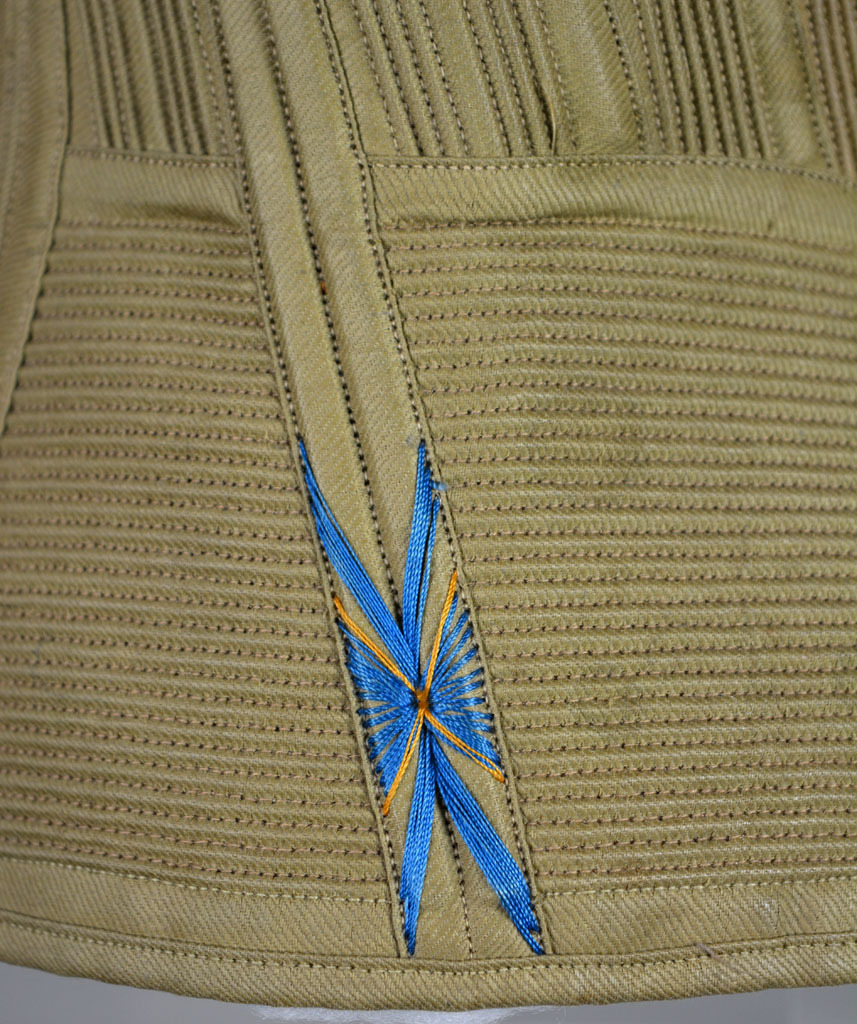
 6
6












 5
5




 1
1





1899/1900
This corset is made of khaki drill lined with white twill and interlined with hessian. There is no boning in this corset except for tempered flat steels to support the back lacing. Instead it has strong, eight ply string cording vertically and across the hips. The spoon busk has a wide steel support underneath which was known as a double busk. The newly formed limited company of R and W.H Symington and Co Ltd produced this quality corset for the extremely low price of 16/3d per dozen which means that it could have retailed at 2/3d each.
Waist 21” Depth 14”

c1890. Busk front corset made from cotton twill lined in fawn coutil and interlined with hessian. This corset is a Symington speciality and is called ‘The Pretty Housemaid’ and is advertised as the strongest and cheapest corset ever made. The corset was made and directly marketed at women in service and was one of the top sellers of its day.







 1
1











 2
2












 3
3




r ranson wrote: I imagine too large a gap would cause the lace to rub/cut against the flesh. A modesty panel (a bit of cloth inside the gap) would reduce the amount of chafing against the lace while working.
Gardens in my mind never need water
Castles in the air never have a wet basement
Well made buildings are fractal -- equally intelligent design at every level of detail.
Bright sparks remind others that they too can dance
What I am looking for is looking for me too!












 3
3




Pearl Sutton wrote:
r ranson wrote: I imagine too large a gap would cause the lace to rub/cut against the flesh. A modesty panel (a bit of cloth inside the gap) would reduce the amount of chafing against the lace while working.
Yes, laces HURT when they rub. A modesty panel is important. I don't wear a chemise with mine though, that might make a difference.
 1
1




"The only thing...more expensive than education is ignorance."~Ben Franklin. "We can easily forgive a child who is afraid of the dark; the real tragedy of life is when men are afraid of the light." ~ Plato
 1
1




Nicole Alderman wrote:
Pearl Sutton wrote:
Yes, laces HURT when they rub. A modesty panel is important. I don't wear a chemise with mine though, that might make a difference.
Don't you have a really cool thread somewhere about how you made medical corset to help with various back issues? I thought that was so awesome!
Gardens in my mind never need water
Castles in the air never have a wet basement
Well made buildings are fractal -- equally intelligent design at every level of detail.
Bright sparks remind others that they too can dance
What I am looking for is looking for me too!





"The only thing...more expensive than education is ignorance."~Ben Franklin. "We can easily forgive a child who is afraid of the dark; the real tragedy of life is when men are afraid of the light." ~ Plato
 4
4











 6
6




Gardens in my mind never need water
Castles in the air never have a wet basement
Well made buildings are fractal -- equally intelligent design at every level of detail.
Bright sparks remind others that they too can dance
What I am looking for is looking for me too!

 1
1






















 2
2












 7
7




 4
4












|
What do you have in that there bucket? It wouldn't be a tiny ad by any chance ...
Rocket Mass Heater Resources Wiki
https://permies.com/w/rmh-resources
|







